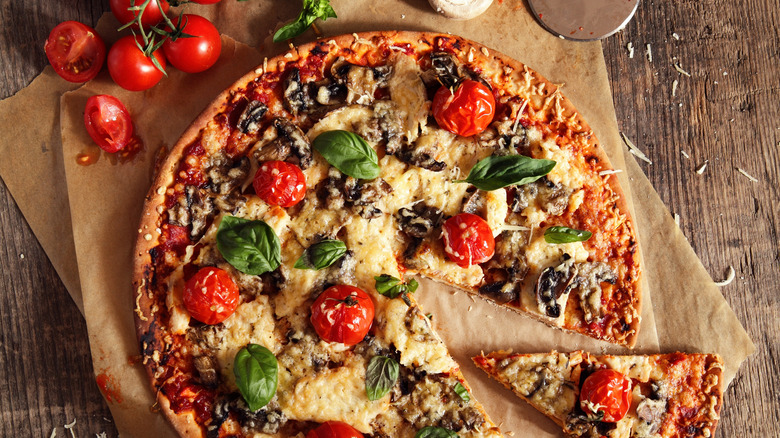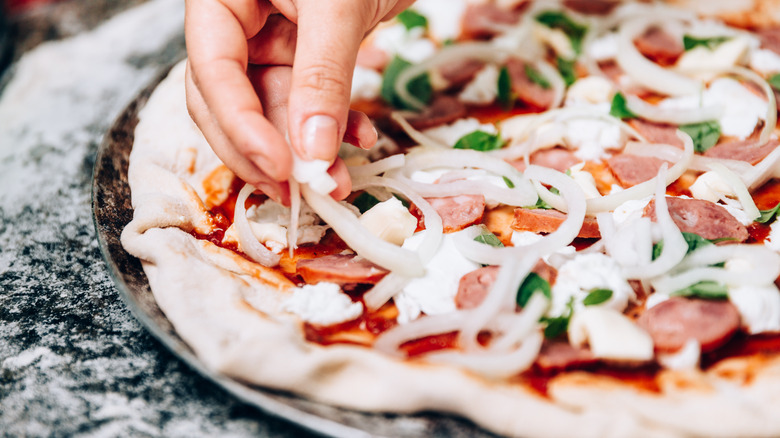Chef Dan Richer's Advice For Crafting An Inspired Homemade Pizza
Making your own pizza is the perfect at-home activity for when you want to cook up something special for dinner or are just looking to work on your pizza-making skills. After you've covered the basics of getting the dough just right and spreading out your preferred pizza sauce, then you've come to the most important question: what toppings do you choose? There's the classic pepperoni, of course, or a veggie-filled option. Or, you may be looking to get more creative and pair up two unexpected toppings.
To find out the best way to go about picking out your toppings, Tasting Table spoke with an expert: Dan Richer. Richer is the author of "The Joy of Pizza: Everything You Need to Know" as well as the judge of the annual Francis Ford Coppola Winery competition called "Perfect Your Pizza." Richer's connection to the Francis Ford Coppola Winery says a lot seeing as the winery has a dedication to pizza — it even has a hotline to help you craft the perfect wine and pizza pairing. When asked for his advice on choosing pizza toppings, Richer said, "Keep it simple! Find one ingredient that inspires you and support it with one or two other elements that make it shine."
Seek out local ingredients and to pay attention to texture
After you've figured out what toppings you want — your main ingredient plus two others that help "make it shine" — then Dan Richer suggests going the local route when it comes to getting your ingredients. This could mean visiting a farmer's market or a local shop, or even growing produce in your backyard if you have the means. He also notes that these local vendors and the products they sell can be a point of inspiration in and of themselves when looking for ideas to build your homamde pizza.
Then, Richer advised the importance of paying attention to texture and the size of toppings. He told Tasting Table, "Be sure to cut vegetables, cheeses and meats to their ideal size so they bake properly on top of the pizza. Use the supporting ingredients thoughtfully to provide texture, acidity, and overall balance to the pizza." After all, the last thing you want is for your toppings to be so big that it makes it difficult to lift and eat the pizza slice — or for one topping to overpower another.
On a similar note, Richer's final piece of advice is not to overdo it on the amount of toppings — stick to the "less is more" mindset. Richer said, "Restraint comes with practice so the only way to know how much is too much is to bake lots of pizzas and evaluate each one. Your pizza making skills will develop over time with practice."

